Angkor
Monday, March 19, 2012
- Silkroad
In the early morning I started in Bangkok. The way out of the city was relatively easy. You just can not be distracted by the heavy traffic. The road was mostly flat and there was hardly any wind. So, despite the heat, I got on pretty fast. In between, I had a cold drink in one of the many 7-eleven shops.
Unfortunately, my camera definitely gave up the ghost. Already in Bangkok I had problems. All at once I could only shoot black pictures. The sun does not seem to be good for her.
Luckily, as a precaution I took a spare camera from home. The pictures are not of the same quality, but better than nothing! Shortly before Chachoengsao I set up my tent by the wayside. Suddenly a man appeared with his daughter. They offered me a shower with dinner. I was too tired and declined thankfully. Although it was always uphill to the border, I was almost a day and a half later at the border crossing. Again you saw all sorts of strange things on the street. You just have to be creative enough.

In Aranyaprathaet, Sombat overtook me on his bike. After a short conversation he invited me for breakfast. His wife conjured up a delicious meal on the table. Overall, he has eight bikes and goes every day to practice. Until his retirement, he worked as an international election observer at the United Nations and has found his new passion in cycling. If he is not in the saddle, he repairs bicycles for friends, acquaintances and relatives or writes blogs thaimtb.com.

He looked extremely fit for his age and envied me for my trip. With his poor pension, he simply lacks the means to finance such a thing. After a small photo shoot, I said goodbye and drove to the border. The chaos at the border crossing was a bit confusing. Lots of traffic, noise, dust and bad signage.
First I had to issue a visa for Cambodia. It cost me outrageous 1200 baht (40 US dollars) although officially only 20 dollars should be required. The official from the visa office did not seem to care that much at all. After 20 minutes I had the visa and a short time later I was on the floor of the Cambodian Kingdom. When changing money, I met Arthur from Holland. Unfortunately, he ran out of money here on the border. For a few days now he is waiting for a transfer from his homeland. The security guard allowed him to sleep in front of the bank.
The street was very flat. At noon I had to flee from the heat in the shade. I just wanted to do my siesta when monks showed up. They hung up some logos and one of the monks talked to me in English.
About 90 kilometers before Siem Reap I found a place to sleep in the eucalyptus forest. In the middle of the night, ants came into the tent. It was not sleep anymore. The list of my mortal enemies is one candidate longer. Besides the ants, these are truck drivers, dogs and the wind. Exhausted, I climbed back into the saddle in the morning and was in Siem Reap at noon.

On the way, my beloved sunglasses from Iran broke into pieces. The shower was a real treat and soon new glasses were found.

First, the next day I tried to fix my camera in a shop. Unfortunately without success. For that I met Sandra and Andi from Austria in the Minimart. They travel for 6 months through Southeast Asia and Australia. We arranged to meet for the next day to visit Angkor Wat together. At the ticket counter, I bought a week pass for $ 60. First, the showpiece, Angkor Wat, came to the fore.

The temple is the largest religious building in the world, which serves as the national symbol of the Khmer. Like the other temple mountains, Angkor Wat is a miniature of space. The central tower symbolizes Mount Meru and the lower peaks surrounding it, framed by the continents (lower courtyards) and the oceans (the moat, 190m wide and includes a 1.5 x 1.3km rectangle). The seven-headed naga (a mythological serpent creature) on the perimeter wall represent a symbolic rain bridge over which man can reach the dwelling place of the gods.
Angkor Wat was created by Suryavarman ||. (reigned 1113-50), which united Cambodia and extended the influence of the Khmer to most of the Southeast Asian mainland. He dedicated the temple to the Hindu god Vishnu as a sign of his devotion. Coincidentally, it was built around the same time as the Gothic cathedrals in Europe (Notre Dame, Chartres Cathedral). More than 50km away, the sandstone blocks that make up Angkor Wat were smashed and then transported on rafts down Stung Siem Reap.
The bike continued to Angkor Thom. The fortified city covers approximately 10 square kilometers). It was built by Angkor's most important king, Jayavarman V ||. (Gov., 1181-1219). In its heyday, the city had about a million inhabitants, at a time when London had to settle for 50,000. Because buildings made of stone or bricks were reserved for the gods, the houses, public buildings, and palaces were made of wood. They fell into disrepair a long time ago. Today you can only see the skeleton of the exceptionally beautiful religious buildings. First we visited the baron.

Then came the 350m long terrace of the Elephant King

and finally the 7m high terrace of the Lepra king.
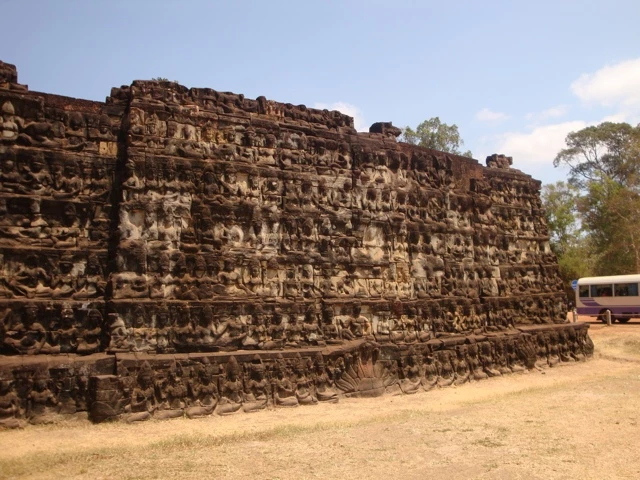
The 12th-century temple of Mahayana Buddhism is intended to illustrate the enormous fertility and power of the rainforest. After this sightseeing, it was getting too hot for us and we started the return journey with our bikes. Sandra and Andi continue to Bangkok and from there on to Australia. Have a good trip you two!
Luckily there was air conditioning in the hostel. So in the afternoon I was able to pull back from the heat. Early in the morning I went the next day to the 32km distant Banteay Srei temple. When I arrived there after an hour, I was already soaked in sweat. For many, the Banteay Srei is the jewel in the crown of Angkor art. The Hindu temple of pink toned sandstone dedicated to Shiwa is one of the most beautiful stone carvings in the world. Built in 967, Angkor is one of the few temples not commissioned by a king but by a Brahmin. Since 2004, the Banteay Srei Temple has been restored with financial support from Switzerland.
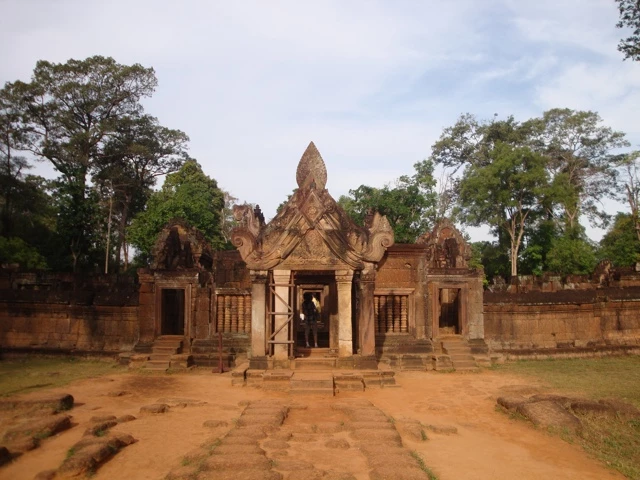
Especially the exhibition was very informative. On the way back to Siem Reap I visited the landmine museum cambodialandminemuseum.org. The founder, Aki Ra, was used by the Khmer Rouge as a child soldier to mine. Later, he changed sides and fought in the Vietnamese army against the Khmer Rouge. After the end of the war, he himself began using primitive methods to eliminate land mines.
In 1994, he was trained by the UN and founded a museum and an independent organization to defuse land mines
cambodianselfhelpdemining.org. His wife takes care of a multitude of children, who themselves became victims of landmines and since then live in the museum. In 2010, Aki Ra was named CNN's Top Ten CNN Hero of the Year by CNN. The exhibition provides detailed information on landmines, the madness of the Khmer Rouge and the life of a child soldier. I ran a few times cold down my back. Only the stories are bad enough. What Aki Ra has experienced in his childhood, you do not want to imagine.
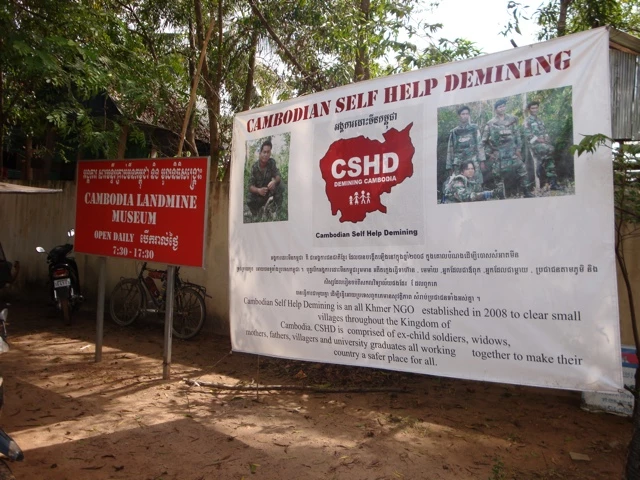
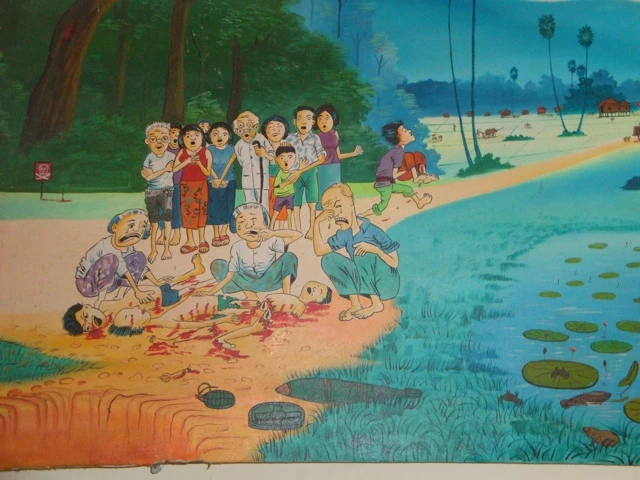


The very next day I wanted to visit the temples of Roluos. They are located 13km east of Siem Reap and are actually well marked. But somehow I was not really awake and promptly missed the turnoff. Only after 30km did I notice the mistake. A small exit in the morning does not hurt either! Roluos (then called Hariharalaya) once served as the capital of Indravarman |. (r., 877-89). The temples are among the earliest large Khmer stone buildings and mark the beginnings of classical art of the country. First, I visited the Lolei and the associated monastery.

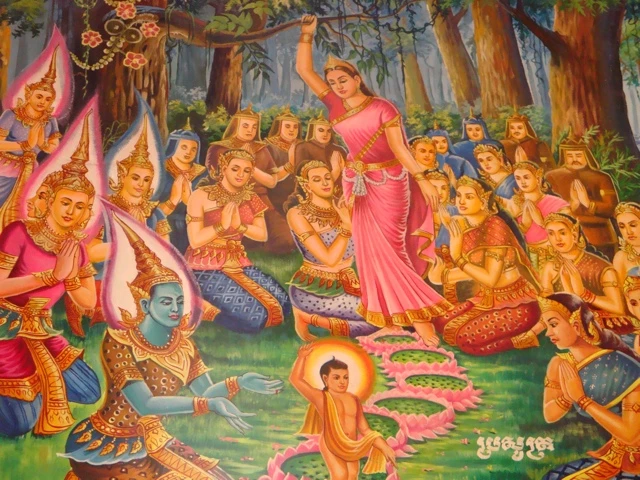
Then followed the Preah Ko


and the largest of the first temples of Angkor dedicated to Shiva, the Bakong.
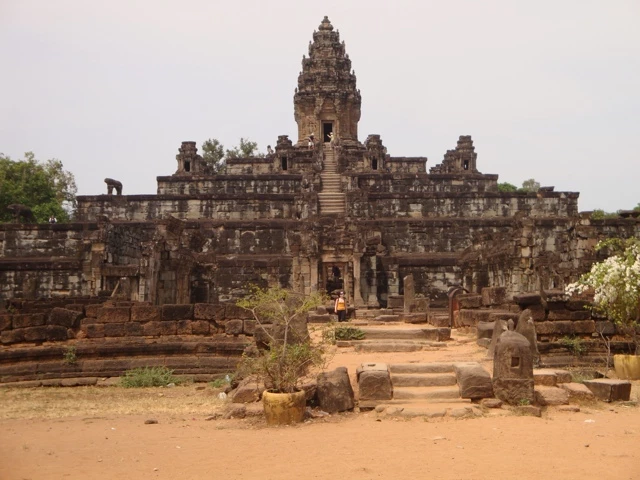

In the evening, I learned from the internet that Cédric has been missing at Gasherbrum 1 since Friday expeditionsnews.ch. As long as there is no certainty, I will not give up hope. I wish Ursula, Charly and the whole Hometeam a lot of strength during this difficult time.
The next day I wanted to re-cycle the western Baray. The ride on the sandy track was not easy and the locals had really fun watching the funny "Falang" (name for foreigners, means long nose). The Western Baray is located just outside the city walls of Angkor Thom and faces west-east. Its layout is rectangular and measures 2.1 kilometers by 8 kilometers; it is the largest baray in Angkor. The water is held by dikes formed from earth. In the center of the Baray is a small artificial island with a Hindu temple from the time of Udayadityavarman II, who had the complex completed by 1066. It was started by Suryavarman I.
Many small temples are only about to be dug up. I visited Ak Yom

and the Prasat Roluh. The atmosphere here was lovely and during that time I did not meet a single tourist.
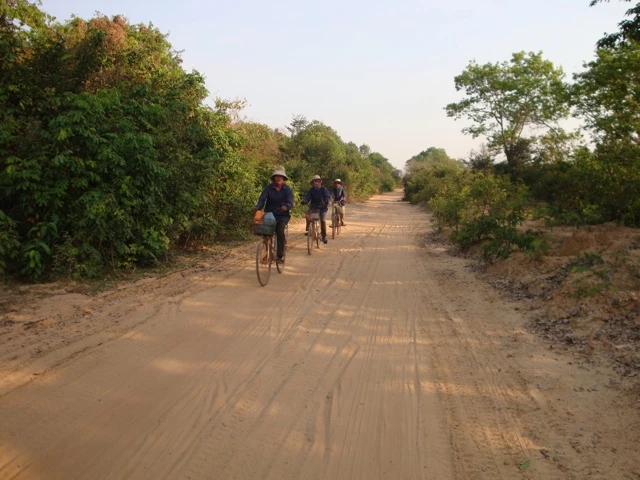
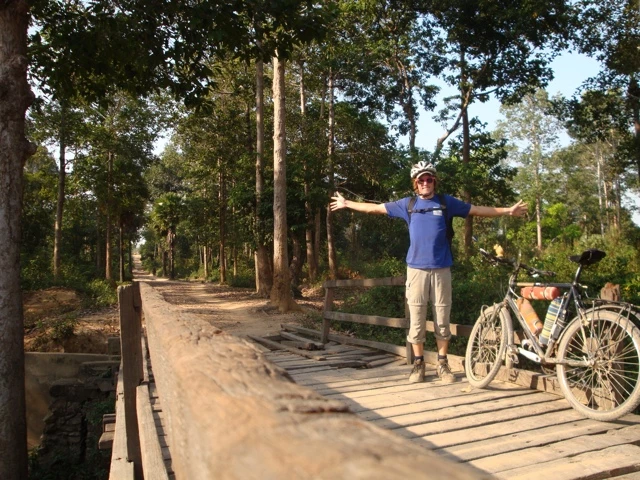
At the end of the day, I drove through the west gate of Angkor Thom and then on to the Preah Khan (Holy Sword). This is one of the largest temples in Angkor and was built by Jayavarman V ||. built. It once housed over 1,000 teachers and was perhaps a Buddhist university.
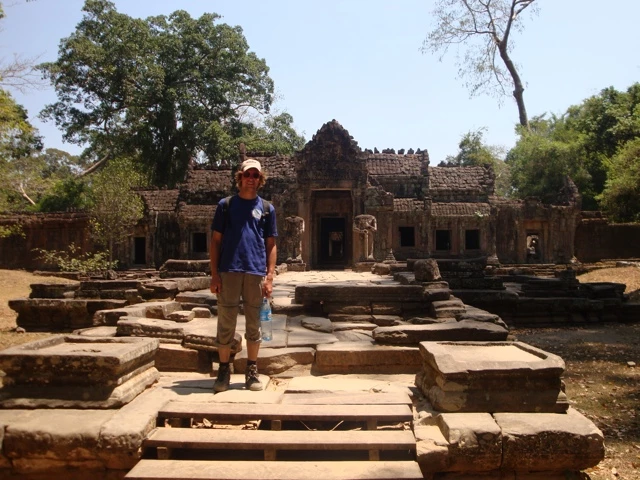
Adam, with whom I cycled through Turkmenistan, wrote to me from Battambang. So I decided to pay him a visit. With the bus it went in 3 hours in the 159km distant city. Of course we had a lot to talk about and spent the first day chatting, eating and drinking. The next morning we took a trip on the bamboo train. This consists of a bamboo platform powered by a 6HP petrol engine. The driver stretches the engine with a stick to tighten the V-belt.
The crazy apparatus drives over the warped, single-track tracks from the French colonial era (built in 1927). Any normal train would probably have long been derailed in quality. When two trains meet, the less loaded one is quickly disassembled to make the other pass. The ride was frolicking fun and the visit to the brick factory was also impressive.


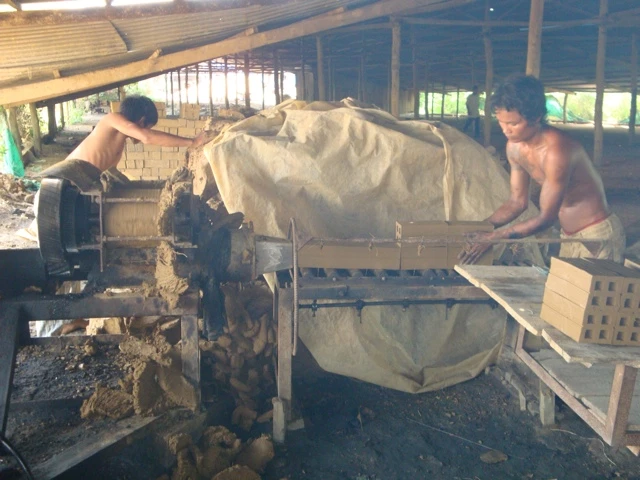

Already the next morning I had to start my return journey to Siem Reap. Adam goes on to Thailand and wants to be back in New Zealand until the end of summer 2011adamglovercycling.wordpress.com. Good luck Bro for the rest of your journey. It was nice to see you again!
The following night, my love diarrhea came to me again. In the morning I also had a fever and a headache. So I spent the day unintentionally between the toilet and bed. Thanks to the antibiotics (probably I am slowly resistant) I was on temple tour again on Sunday. First, I visited the Banteay Samre.
Then followed the eastern Mebong
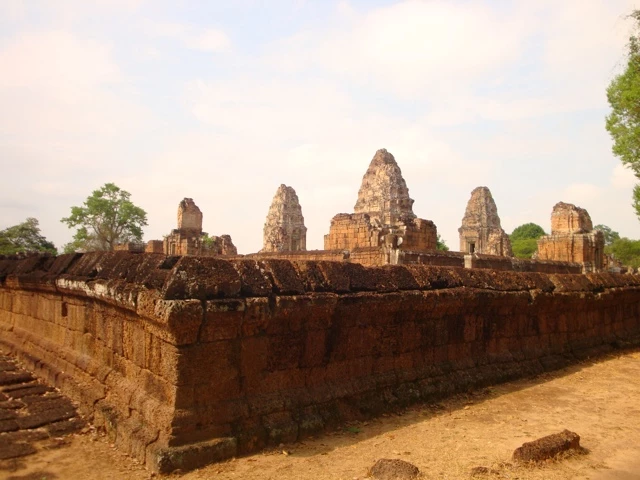

About 2km later came the Preah Neak Pean. It is another 12th century building by Jayavarman V ||. it houses a large square basin, which in turn surrounds four smaller square basins. In the middle extends a circular island.

On the way back I came to Pre Rup,
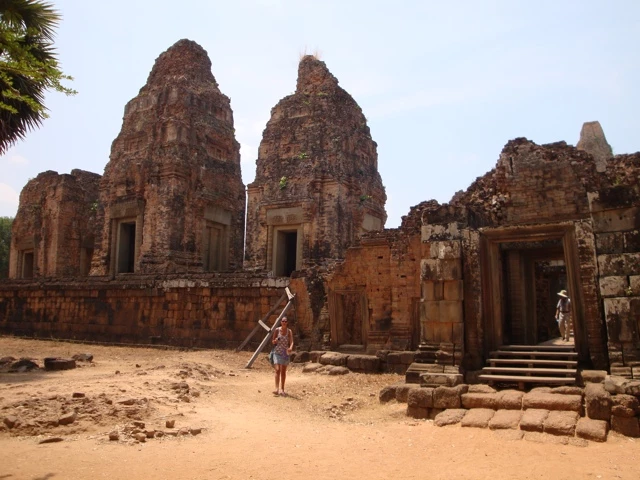

the water basin Sra Srang,


the temmple Bat Chum,
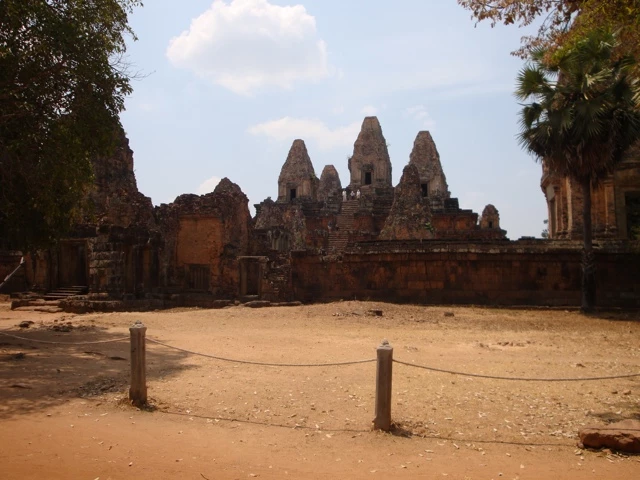

the remote Banteay Kdei

and finally Prasat Kravan over.

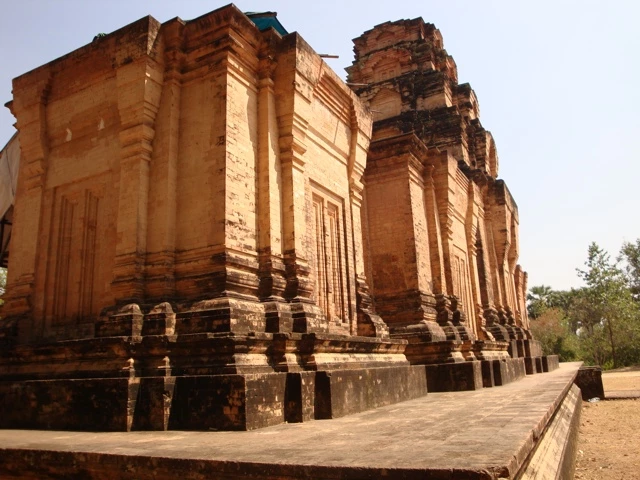
After such a temple day you have seen enough of the things. However, the biggest annoyance was the many souvenir and beverage vendors. Their constant "Hello Sir!" Gets a lot on the eggs over time. I will stay one more day in Siem Reap and then on to Phnom Penh, the capital of Cambodia. There, I look forward to seeing Philip again and also applying for my Laos visa.
